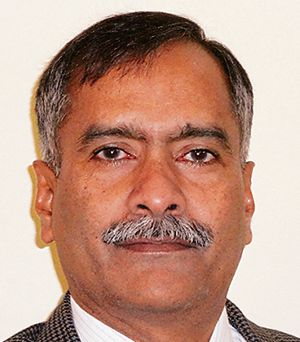Institutions and legends
IN life, one meets people who leave a lasting impression. Normally, a teacher, a religious guru or a political leader fit this description. But then there are some who are termed an ‘institution’ — people who are maybe from a humble background but have contributed so much as to become unforgettable. Ask anyone who has served in the 1970s and 1980s at Indian Air Force (IAF) stations in Jammu and Leh about whom they consider ‘institutions’, and they will recall the names Lekhraj ji, Chunnilal ji and Thupstan.
Lekhraj ji was around 55 years old when I, with just a hint of a moustache, met him in June 1978 at the officers’ mess bar of the IAF station, Jammu. Ever-smiling and speaking in a tone that was just above a whisper, Lekhraj ji sported a saafa (a flowing turban) and had a presence that one could literally ‘feel.’ Besides his knowledge of every officer who had served at that historic airbase, his word was law. That bar always had a garrulous gathering of young officers whose blabbering increased with every passing minute. No officer ever signed a bar chit, but never was there a query about a wrong entry. No bell was rung to indicate the ‘last drink’ — Lekhraj ji, looking at or pointing to the wall clock, conveyed a no-nonsense decision to close. The look was dependent on the level of merrymaking — the more jovial the atmosphere, the more lenient he was.
Then there was Chunnilal ji, the head butler. With him at the helm, there were no fixed lunch or dinner timings. A late arrival after a day’s flying assignment, or an evening ‘assignment’ with a friend at a movie hall still saw a piping-hot meal available for us ravenously hungry flying officers. And as you left the dining hall, Chunnilal ji’s smile exuded love, as if a mother were seeing her child relishing her food.
And on to Leh, where Thupstan — mispronounced as Turpis — was the ‘boss’ of our daily routine. It was 5 am and you would be curled up in a few blankets, topped up with a quilt, in minus 20°C. A cry of ‘Juley saab le’ (Ladakhi greeting) would wake you up for the early-morning take-off. Turpis would then decree whether the weather was fit for flying —‘saab, mausam kharab hai’ would be such a welcome assessment. The water was heated in the bukhari (kerosene room heater), breakfast was served and as you went out to fly, you were sure that on return, the bukhari would be gurgling, your room warmed up and the chaos neatly dealt with. Turpis joined 114 Helicopter Unit (the Siachen Pioneers) on April 1, 1964, the day it was raised, and served 42 long years. Mention Turpis to any 114 pilot and you will have a pair of moist eyes staring back at you. ‘Institutions’, did I say? No, legends!









